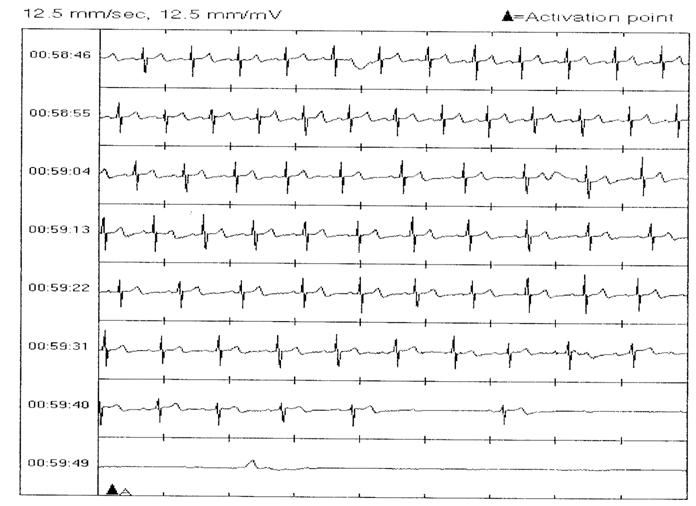Convulsive Syncope
Typically patients easily tolerate the early parts of tilt with little change in blood pressure or sensorium. Following a variable period of time – on the order of 7 to 20 minutes, patients develop orthostatic symptoms of nausea, dizziness, heat, heavy breathing, and sweatiness associated most commonly with a small initial slow fall in blood pressure (which can be seen if the figure is inspected closely). In short order there is an abrupt drop in blood pressure and heart rate. The early fall in blood pressure is coincident with a decrease in vasoconstriction (the peripheral arteries vasodilate) which normally occurs as part of the neurovascular compensation required to maintain blood pressure with orthostasis. Blood pressure and heart rate may plummet precipitously, and asystole may occur. When this happens there is a rapid loss of central nervous system activity and often a dysinhibition of peripheral neurologic responses resulting in muscular movements mimicking a tonic-clonic seizure. This is denoted "convulsive syncope". That no true seizure activity is present has been confirmed as early as the 1950’s by Gastaut and associates and later reconfirmed using HUT methods by Grubb and coworkers in the 1990’s. Such episodes, while relatively uncommon, are quite dramatic and such phenomena are periodically "rediscovered" by beginning practitioners of the HUT art. There are several sidebar observations on simple faint that stem from the convulsive variant.







No comments:
Post a Comment